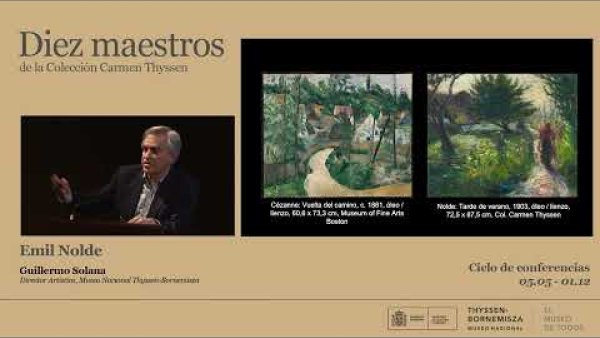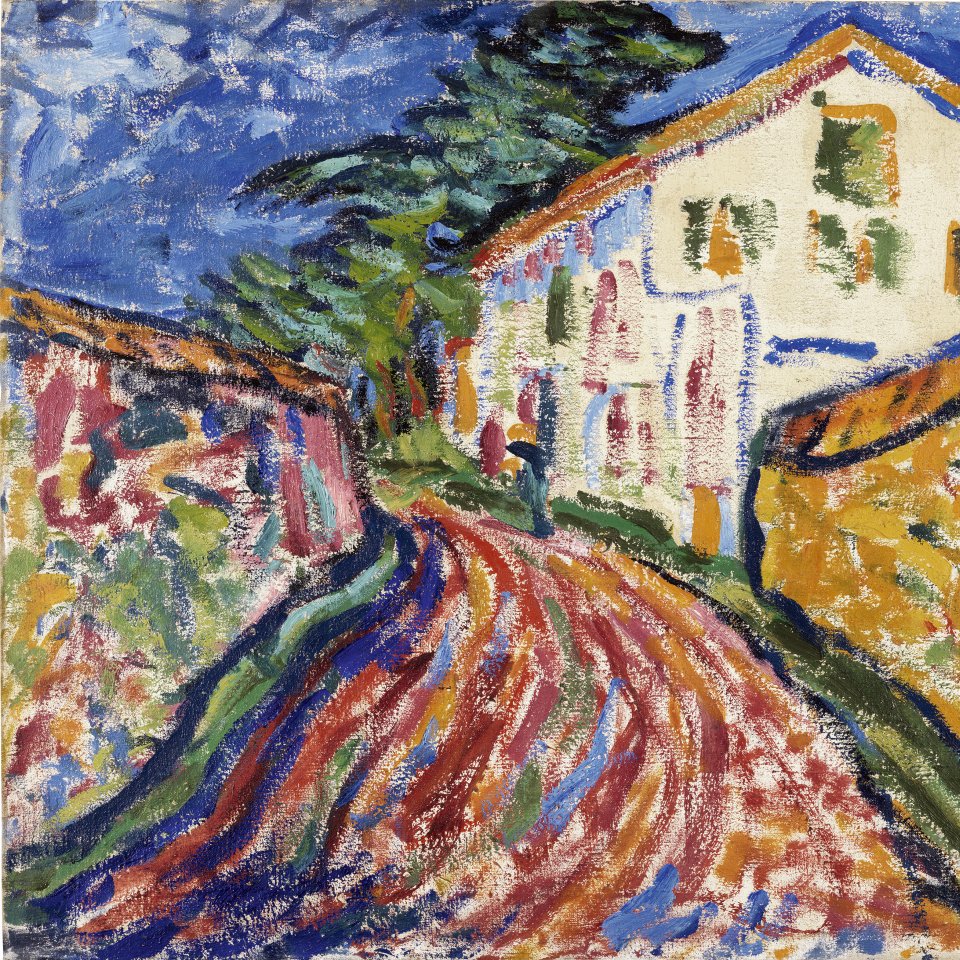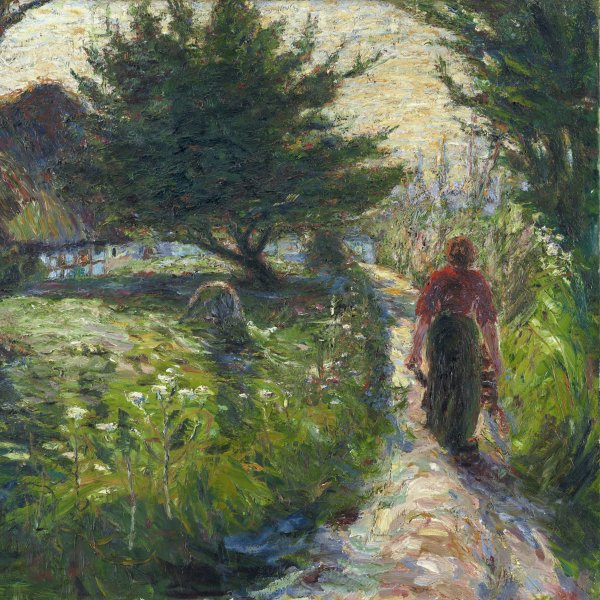Autumn Evening
Emil Nolde painted Autumn Evening in Utenwarf, in his native Schleswig, which became a part of Denmark after the war. Nolde had bought a house in this area in 1916, where he would spend long periods each year. This melancholic painting, which according to Peter Vergo was executed between May and October 1924, depicts the flat scenery of the area, with its characteristic billowing clouds, in the throes of a rough storm that gives it a disturbingly menacing appearance.
As in most of his paintings from the 1920s, in Summer Evening the colours are more saturated and infused with symbolic and emotional connotations. Since his beginnings as a painter Nolde had attached particular importance to colour. As he wrote in his autobiography, to him colours “have a life of their own, weeping or laughing, dream and joy.” The use of bright colours, applied to the canvas straight from the tube, made his paintings significantly similar to the Expressionistic experiments of the start of the century.
Furthermore, throughout his entire artistic career Nolde was particularly concerned with expressing his inner emotions, not only through colour but also through an aesthetic of distorted forms. His landscapes, always constructed from a feeling of at-oneness with nature, can be interpreted as inspired by the Germanic character that links him to German romantic artists like Friedrich. The latter’s landscape entitled Evening on the Elba, 1832, acquired by the Dresden Staatliche Kunstsammlungen in 1909, bears such evident similarities to Nolde’s landscapes that everything indicates that Nolde must have been familiar with it.
Autumn Evening was first shown in 1927 in Dresden, where Nolde had been involved for a short period with the Die Brücke artists. Years later, according to Martin Urban, the author of the catalogue raisonné of the artist’s oeuvre, it was included in the Nolde exhibition at the Kunsthaus Rudolf Probst in Mannheim in 1937, which was closed by the authorities only three days after opening. Despite Nolde’s initial connections with Nazism, his work was branded as degenerate and included in the exhibitions staged for the purpose of denigrating modern art as Entartete Kunst (Degenerate Art). This is why Baron Thyssen acquired a large set of works by Nolde from the 1960s onwards.
Paloma Alarcó












